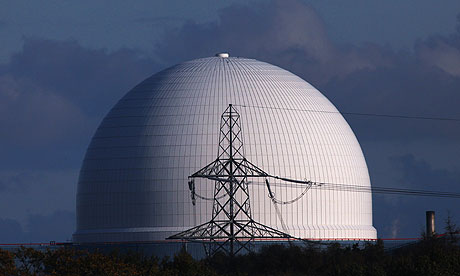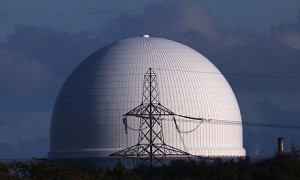February 27, 2014 – After Fukushima it would seem that nuclear power has no future even in a world combating anthropogenic (human caused) climate change because of the burning of fossil fuels for electricity.
But that belies the truth. In fact 12.3% of electricity generated globally today comes from nuclear power plants. Around the world 434 operating nuclear reactors are generating 2.4 trillion kilowatt hours of electricity annually (2012 figures). In the United States nuclear power has a 19% share of the nation’s generating capacity. In Canada that number is 15%.
And despite Fukushima and decisions such as Germany has recently made to decommission its nuclear capacity, 69 new nuclear plants are under construction. The storage and remediating of spent fuel rods remains a significant challenge, as does the potential for bombs to be made from nuclear fuel, and yet many new countries, including Iran, see nuclear as critical to their future not for the bombs but for electrical power generation. Why is that? Because electrical energy is largely what separates developed from developing nations. And generating electricity without contributing more CO2 to the atmosphere addresses climate change challenges directly.
It is not entirely true that nuclear power is green energy. The energy generated is green but the building and maintenance of today’s nuclear plants is GHG intensive. Just think of the hundreds of thousands of concrete used for containment structures, and the contribution to GHGs from the transportation requirements needed to build and maintain these facilities.
When you compare the threat to human and other life on the planet posed by nuclear power station disasters, and that posed by continued use of coal and other fossil fuels to generate electricity, the numbers are in stark contrast. NASA estimates for the number of deaths from nuclear power accidents including exposure of local populations to radioactive contamination total just under 5,000 over less than 70 years since the technology emerged. Compare that to the more than 1.5 million in China who experts say die each year from respiratory and cardiac illnesses correlated to the burning of coal for power generation.
Today a typical American nuclear power plant produces 20 tons of spent fuel each year. Over 40 years the waste from nuclear in the U.S. has reached 70,000 tons with no permanent disposal solutions in place. This is an indictment of the nuclear power industry but nevertheless, compare that to the environmental blight from coal mining in places like West Virginia where whole mountain tops have been leveled, river valleys filled and water sources polluted. Yet the American public has a NIMBY attitude about nuclear.
Finally looking at the next generation of nuclear power plants, smaller, safer (no meltdowns, no China Syndrome, no fissile material for bomb making), capable of absorbing the 70,000 tons of spent fuel from older plants, or using less volatile fuels like thorium, it would seem a no brainer to back this solution to meet future energy needs.
We cannot forget what happens when human hubris interferes with careful planning. The results are Chernobyl, and Fukushima. Today 157,000 Japanese citizens have been impacted by the earthquake and following tsunami that has resulted in the abandonment of 11 towns and hundreds of square kilometers of the country. And in the Ukraine near Chernobyl a swath of the country is no longer inhabitable by humans although it appears the animals and other wildlife are enjoying our absence.











[…] Fact Checking the Nuclear Energy File https://www.21stcentech.com/state-nuclear-energy-today/ […]